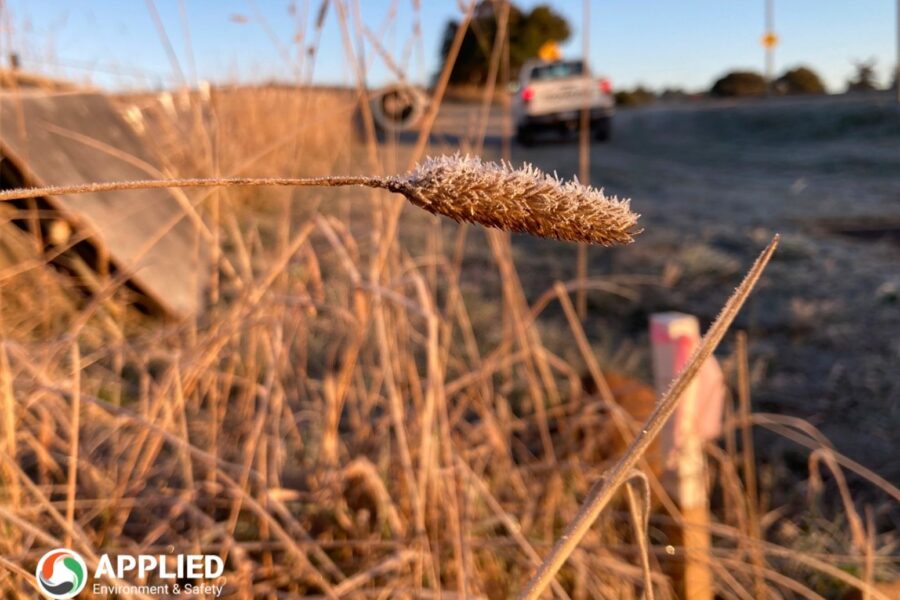
How to Prepare a Compliant Erosion and Sediment Control Plan (ESCP)
Protecting Land and Water on Construction Sites
A compliant Erosion and Sediment Control Plan (ESCP) is essential for any construction site that disturbs soil. It provides a clear framework for preventing erosion, controlling sedimentation, and protecting water quality from runoff during building works or infrastructure development.
When properly implemented, an ESCP helps to prevent sediment from leaving the site, reduces environmental harm, and demonstrates compliance with approval and permit conditions.
This guide outlines how to prepare a compliant erosion and sediment control plan, the steps for certification, and how to apply practical erosion and sediment control measures across your project.
1. Understand the Purpose of an ESCP
An ESCP outlines how erosion and sediment will be managed during all stages of construction works, from starting work to project completion. It defines site-specific risks, planned drainage and controls, and maintenance actions to manage erosion and minimise soil loss effectively.
A compliant plan ensures you:
- Maintain stable building sites throughout rainfall events
- Protect nearby land and water environments
- Reduce project delays and environmental harm
- Meet local council, state, and federal environmental requirements
2. Know When a Sediment Control Plan Is Required
Most construction sites require a formal sediment control plan when works:
- Disturb significant ground area or involve urban stormwater connections
- Are near sensitive land and water systems such as creeks or wetlands
- Form part of larger building works or civil infrastructure
- Fall under Council, State or Federal approvals
Preparing an ESCP early, before starting work, ensures your site is compliant and reduces costly redesigns later.
3. Gather Site Information
Collect baseline data to ensure your ESCP accurately reflects conditions on the ground:
- Topography and drainage patterns
- Soil types and erosion potential
- Rainfall intensity and frequency
- Sensitive receptors, nearby watercourses or urban drainage
This information determines how you’ll implement erosion and sediment control measures effectively and ensure runoff does not degrade water quality.
4. Identify Risks and Control Zones
Segment the site into logical drainage catchments to manage flow and inspection zones. Within each, identify:
- Erosion sources – disturbed areas, slopes, and soil stockpiles
- Drainage pathways – channels, drains, or overland flow
- Control points – where sediment control measures will be placed
Smaller catchments help you prevent sediment buildup and make it easier to inspect and maintain controls.
5. Choose Appropriate Control Measures
Erosion Control Measures (to prevent soil loss)
- Maintain vegetation cover and stabilised surfaces
- Apply erosion-control matting, mulch, or geotextiles
- Construct bunds or diversion drains to divert clean water
- Minimise exposed soil during active building works
Sediment Control Measures (to trap sediment)
- Install silt fences, sediment basins, or check dams
- Use coir logs or rock weirs to slow down water flow
- Stabilise site entry points to prevent mud tracking
- Protect drainage inlets during construction sites activity
When properly implemented, these controls help prevent erosion, control sedimentation, and safeguard surrounding land and water systems.
6. Develop the ESCP Document
A compliant ESCP should include:
- Site layout, drainage, and catchment boundaries
- Erosion and sediment control plan drawings
- Installation details for each control measure
- Inspection and maintenance schedule
- Roles and responsibilities
- Reporting procedures
AES’ environmental specialists prepare site-specific plans that meet approval and requirements.
7. Implementing Erosion and Sediment Controls
A plan is only effective if it’s properly executed.
- Install controls before starting work on site.
- Ensure all workers understand their role in preventing erosion and protecting water quality.
- Monitor controls daily and after rainfall events.
- Replace or repair damaged infrastructure immediately.
This proactive approach reduces environmental harm and ensures compliance across all building sites.
8. Monitor, Maintain, and Report
Ongoing maintenance is essential to ensure ESC effectiveness:
- Inspect bunds, drains, and fences regularly
- Clear accumulated sediment from basins and traps
- Log all actions in a site inspection checklist
- Update the ESCP as the project progresses
Effective erosion and sediment control management keeps your project compliant and your controls working, even in extreme weather.
9. Demonstrate Compliance
Regulators often require evidence of implementing erosion and sediment control procedures.
Keep:
- Inspection records and photographs
- Maintenance logs
- Revised ESCP versions
This documentation demonstrates diligence and helps you pass audits or respond to compliance reviews confidently.
10. Partner With AES for Certified Support
Applied Environment & Safety helps Australian developers and contractors design and implement compliant erosion and sediment control plans.
We provide:
- Certified ESCP documentation
- On-site training in preventing erosion and implementing sediment control measures
- Audits and compliance inspections
Contact AES today to protect your site, maintain compliance, and safeguard land and water quality for the long term.
For more resources, be sure to review The Complete Guide to Erosion and Sediment Control in Australia.
